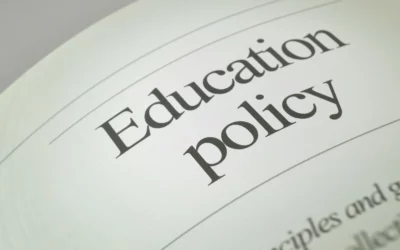
Written by The Likely Voter
June 29, 2023
![]()
A religious school in Colorado dismissed a teacher for leading a school assembly on race issues that the school believed misrepresented the religious teachings of the school. The teacher sued the school, prompting the school to cite the ministerial exception and petition the Supreme Court to hear the case. The court opted not to hear the case. In his recent Insights article, Sutherland’s Bill Duncan provided an update on the case’s status.
For voters confused about why the court agrees to hear some cases while declining others, below we provide a general overview of how a case actually ends up on the court’s docket.
The federal court system is broken up into three distinct levels:
- The district courts
- The appeals/circuit courts
- The Supreme Court

The district courts
The district courts are the general trial courts and hear every federal case in their respective jurisdictions. Federal cases are legal matters that fall under the Constitution or federal statutes.
The appeals/circuit courts
The appeals, or circuit, courts (the terms are often used interchangeably) must hear every federal case up for appeal. The United States has 12 regional circuits and one federal circuit. The state of Utah is under the 10th Circuit, which covers six states in total.
The Supreme Court
The Supreme Court oversees judicial power across the entire country. Should a case be appealed beyond the circuit courts, the Supreme Court can decide to hear the case.
As parties petition to have their case heard by the Supreme Court, the court will consider several things when evaluating whether to hear the case.
“The court may be thinking, ‘Let’s allow the district or appeals court to fix this problem,’” Duncan said in a recent interview. “Because the Supreme Court’s decisions become the law of the land, there may be instances where they don’t feel the need to get involved yet.”
Where the court would feel a reason to intervene, Duncan explains, would be (for instance) “if the 5th Circuit decides a case differently than the 10th Circuit, the Supreme Court may need to step in to clarify who is correct in their interpretation.”
Another instance is when a case requires a quick resolution. For example, Bush v. Gore (2000), when the case would determine who became president of the United States. The Supreme Court acted quickly to provide national stability.
In some instances, the Supreme Court may hear a case if the issue is believed to have a strong chance of being brought up again.
“The Supreme Court may take it on just to avoid further conflict,” Duncan said. “Like flag burning, for example, and how despite being offensive, the court ruled it to be protected under the free speech clause of the First Amendment.”
For a case to be heard and decided by the Supreme Court is no small feat. In the court’s evaluation of each petition, it must consider the reality that would come with its decision: The ruling becomes the law of the land.
By maintaining a level of restraint in which cases it takes on, the Supreme Court is allowing for the justice system to properly undergo its process. Not only does the Supreme Court have limited bandwidth, but it also realizes that it should step in only when necessary. By keeping to a selective process, the Supreme Court is able to ensure that the legal system maintains integrity and stability.

For a more in-depth perspective on this article, read our Insights piece here.
Takeaways: the most important things voters need to know. For civically engaged citizens.

- The federal court system is broken up into three distinct levels and can only hear cases on constitutional or federal statutes.
- The Supreme Court will often prefer to have the lower courts handle a case before it gets involved.
- When the Supreme Court decides a case, it becomes the law of the land.
More Insights
Read More
What’s happening with education choice policy?
There’s movement on a federal scholarship tax credit while more states adopt private school choice policies.
Trump’s tariffs: path to working-class prosperity, or protectionist misstep?
Defenders argue tariffs will restore manufacturing jobs, while critics say they amount to a tax on Americans with little real benefit. Experts from both sides weigh in.
Congress should follow Utah’s lead on protecting kids online with app store law
A new bill to regulate app stores has been introduced in Congress.



